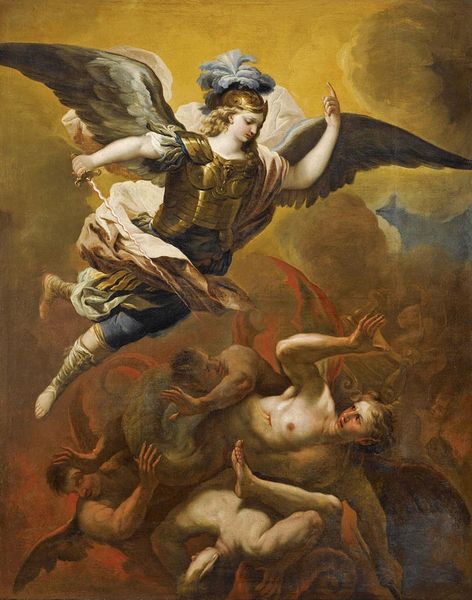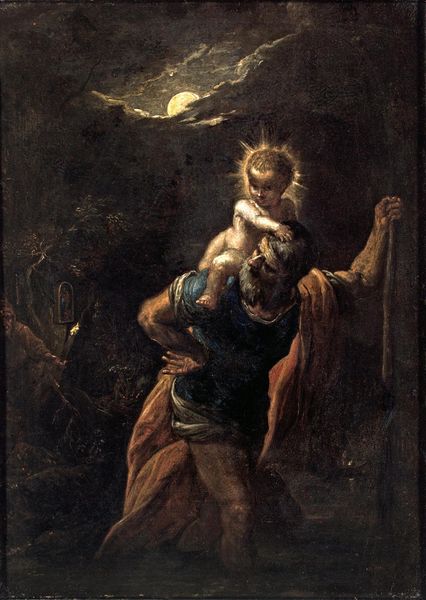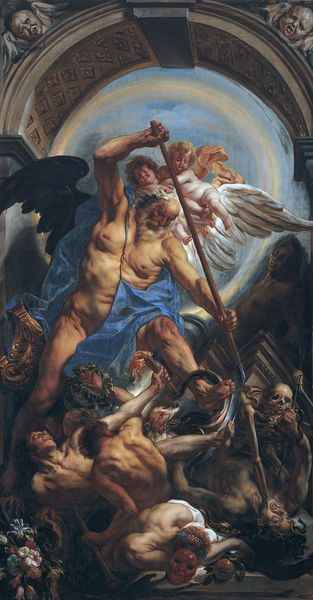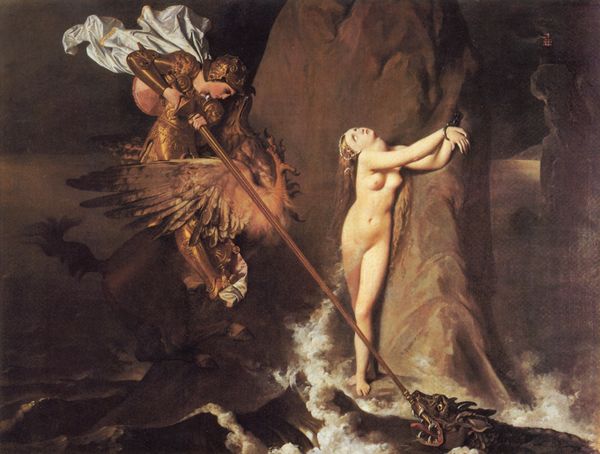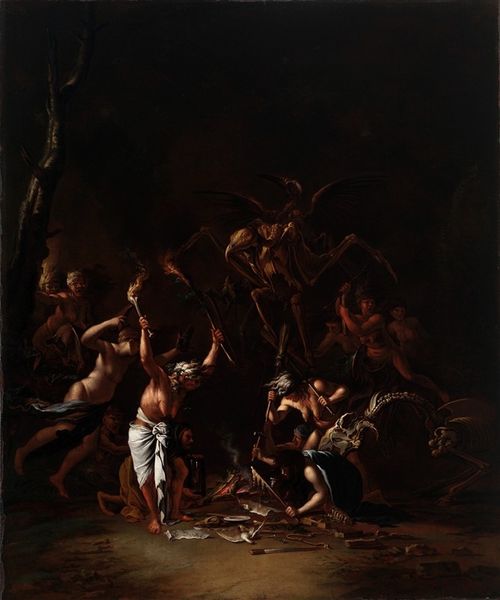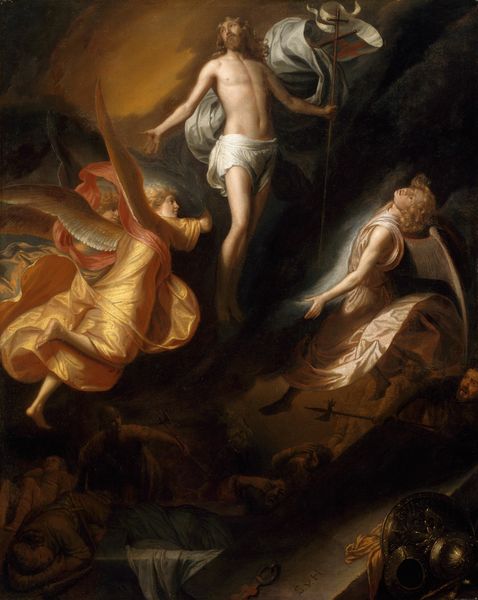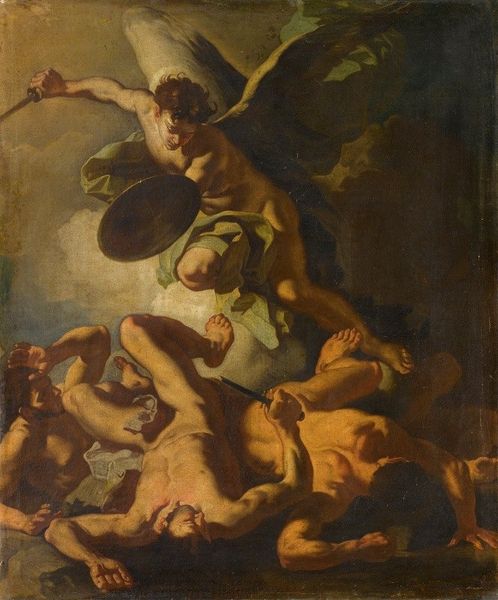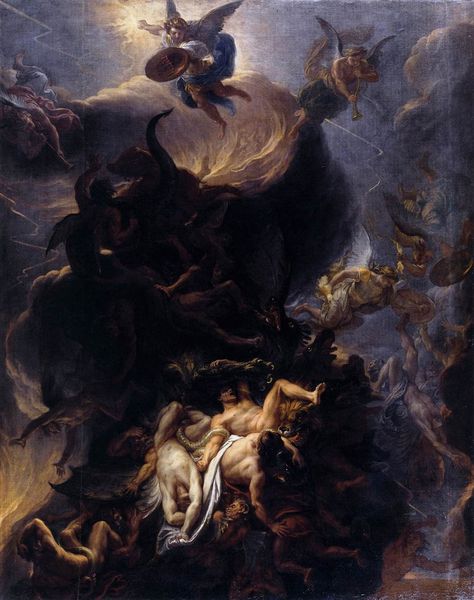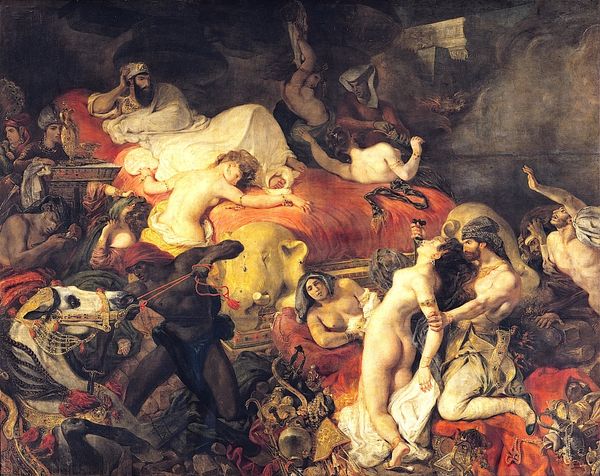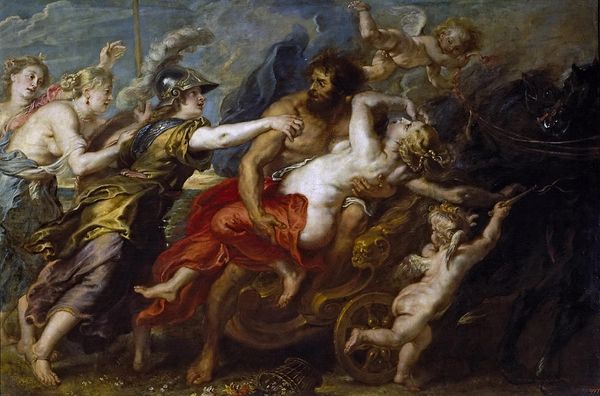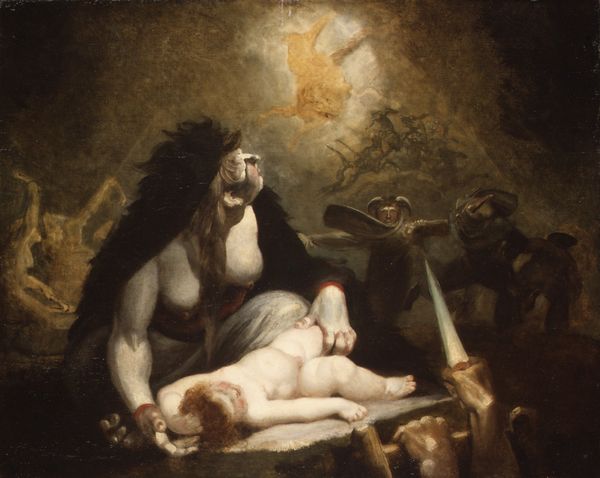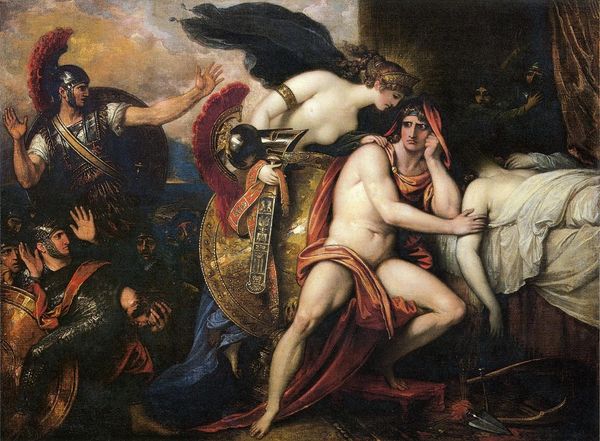
Copyright: Public domain
William Hogarth crafted "Satan, Sin, and Death" using oil on canvas; its turbulent composition immediately captivates us. Dynamic shapes and shadowy colors evoke a sense of chaos and unease. Hogarth uses stark contrasts between light and shadow to amplify the drama. Notice how the figures are intertwined yet distinctly rendered, a visual device that explores their complex relationships. The textures, from the smooth skin of Sin to the skeletal form of Death, add another layer of meaning, representing mortality and decay. These contrasts invite a structural reading, where each element plays a crucial role in a larger thematic discourse about sin, death, and moral corruption. Consider how Hogarth employs semiotic codes. The figures and their attributes – Satan’s shield, Death’s arrow – function as signs within a culturally established system, allowing Hogarth to destabilize conventional allegorical depictions. The painting, then, becomes not just a representation but an active engagement with ideas about morality.
Comments
No comments
Be the first to comment and join the conversation on the ultimate creative platform.
